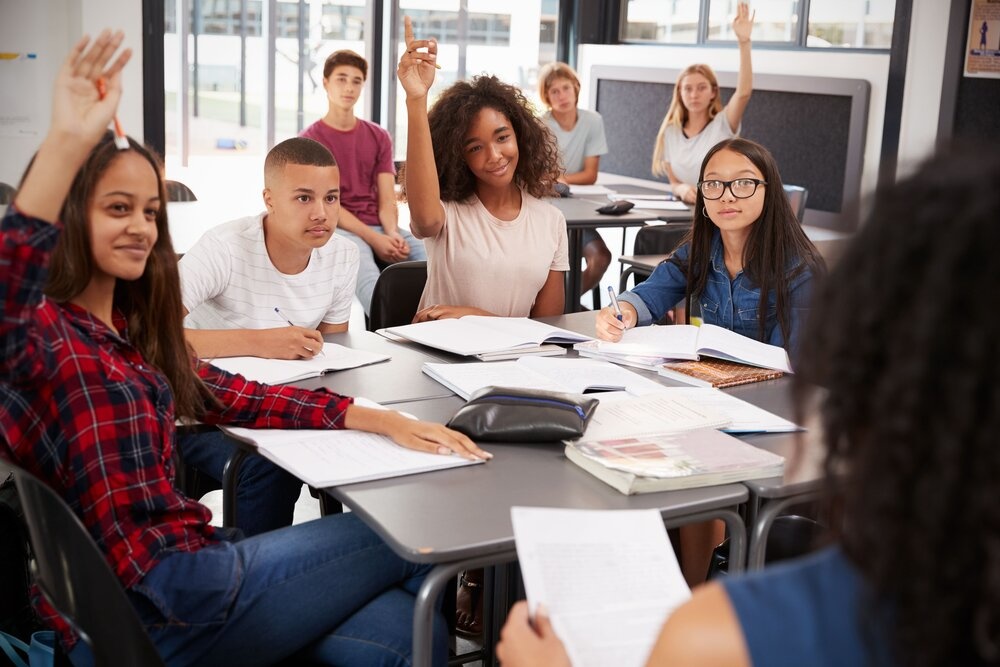
The British Empire. The East India Company. The transatlantic slave trade. Each of these is an example of a contested history that is particularly relevant to the UK and which you might find being taught in a school.
The idea of ‘contested history’ refers to historical events or legacies that are in some way considered controversial, typically due to the harm they have inflicted upon a particular group. We often see reflections of contested histories in contemporary political life, both in conflicts unfolding abroad and locally in the UK in disputes around statues, plaques and other monuments to historical figures with controversial legacies. The toppling of the statue of Edward Colston into Bristol Harbour in 2020 is one case that leaps to mind.
Many teachers are naturally wary of unpacking contentious subjects in a classroom environment; the aforementioned examples are rarely taught in depth even at the secondary level. However, if approached correctly, contested histories can provide an invaluable window into students’ modern lives and prepare them for their futures as active global citizens in a way few other subjects can.
Contested histories in the curriculum
The current National Curriculum does not offer significant guidance as to how or when contested narratives might be brought into the History classroom – or any other classroom.
More recently, the Department for Education (DfE) has made steps to address this through new guidance. Here, the DfE stresses the importance of teachers tackling political issues by avoiding the promotion of one side over another, instead offering pupils ‘a balanced presentation of opposing views’. It cites the Israeli-Palestinian conflict as an example of a ‘political issue’, which we might better understand as a contested history.
The guidance does not offer explicit suggestions on year groups where these topics might be appropriate to raise, but suggests that discussions about controversial political figures should be resolved for ‘older’ students who are better equipped to engage in debate about them. We might infer from this that contested histories are best taught from Key Stage 3 onwards.
In their chapter on the subject in Teaching History and Social Studies for Multicultural Europe, Dean Smart and Penelope Harnett criticise the National Curriculum’s focus on History ‘mainly as the narration of the ‘national story’ in which incomers are mentioned, and successfully assimilated: a continuation of ethnocentrism from earlier curriculum models’.
This is the outcome we should aim to avoid through teaching contested histories; one which does not require expressing personal political sentiment to students as the DfE is clearly concerned with in its guidance.
Why should contested histories be taught?
Historical narratives play a major role in shaping our modern society and are thus important to students’ eventual adult lives. Teaching them to students therefore helps them to develop into active citizens and helps them to develop their own identities.

On a more immediate, practical level, teaching contested histories also allows students to gain a better understanding of history as an academic discipline that changes over time. It also helps them to develop critical thinking skills, as we will discuss further below.
Bringing contested histories into the classroom
Understanding the importance of contested histories is only the first part of teaching them effectively. Here are some key points to consider as part of the process.
Set the tone
Your students aren’t clueless. They will likely have at least marginal knowledge of many contested histories already, gleaned from the news or social media or possibly even lived experience. Some of this knowledge may be biased or otherwise misinformed, but confronting this in a productive way is a critical part of teaching and learning.
To ensure that happens, begin by setting your expectations for the discussion. Acknowledge the controversy and the topic’s continued relevance today, and establish that a definite answer might not be drawn during the lesson. It also pays to emphasise that historical narratives are often shaped by those in power, and that the ‘narrator’ must always be kept in mind.
Above all, approach the topic empathetically. The selected history’s impact on different groups in society may provoke very personal reactions in your students. Make sure they are made aware of this too, and that the class proceeds with the understanding that the real-world consequences of the events being studied are to be treated sensitively.
Provide diverse sources
As a consequence of their controversy, sources for contested histories often conflict with one another. This does not need to be an obstacle; instead, use it as an opportunity to have your students exercise some wider thinking skills.
When presenting these sources, ask your students what they think of them. Are there gaps in what the sources cover? Can they see any evidence of bias? This is an excellent way to introduce basic critical thinking skills to students, which will have broad application throughout their education and later lives.
Of course, a careful selection process is necessary here: all competing sources should be of a similar quality and thoroughness to avoid false equivalence or ‘both-sidesing’. Bring a range of both primary and secondary sources wherever possible; documents, newspaper articles, photographs, film clips and political cartoons (ideally from different camps) will help to illuminate the topic from multiple angles.
Interrogate the narrative
The very nature of contested histories is rooted in disagreement. Set aside some time after covering significant events or aspects of the topic and encourage students to ask questions and voice their own opinions about the narratives presented. If appropriate, they could be divided into groups to debate the relative merits of different perspectives.
It might be worthwhile to preface this by setting out some ground rules for safe discussion if you haven’t already. Reaffirm the class’s commitment to approach the topic empathetically and consider how the various groups involved would have experienced the same event differently. The aim here is to see the issue from a range of perspectives without dismissing or improperly portraying them.

You might also consider referring back to the DfE’s guidance on ‘Political impartiality in schools’, as it provides some rough advice on how far it is considered suitable to have students participate in politically-charged exercises.
What are the risks?
As much as contested histories have to offer students, the process of teaching them is not as straightforward as it is for more mainstream topics.
To begin with, teaching any controversial topic requires a good deal of sensitivity on the teacher’s part – doubly so when discussing real-world events that may be particularly uncomfortable for students who belong to relevant ethnic or religious backgrounds.
The potential for parental backlash is a natural outgrowth of this. Teachers will understandably be wary of their words being misconstrued by students and causing outrage when spread outside its intended context in the classroom – a fear that is all too well founded in the age of social media.
In approaching contested histories, teachers therefore need to plan lesson content and delivery far more carefully than they might otherwise. Students will undoubtedly have questions to raise about the topic at hand, or even challenges for the material, and this should be anticipated; no teacher should be left without an answer when a student asks about the consequences of Oliver Cromwell’s invasion of Ireland, for example.
Your next steps
As challenging as the inherent obstacles might seem, there is help available to assist teachers in preparing for and overcoming them. Parallel Histories is a charity that helps teachers and students to interrogate controversial historical topics in a constructive environment, with online factsheets and modern-day case studies to help ground discussions in reality. Many other services offer similar resources.
Consider also communicating with parents about the planned inclusion of contested histories in the curriculum, so they are aware of what their children are going to study and have an idea of the measures that will be taken to ensure that the learning environment is safe and unbiased.
Finally, if you believe your own voice will not be able to do justice to a contentious piece of history, consider bringing in a visitor from a topic-relevant group to share their own perspective. There are many professional historians who will be willing to offer their perspective to students.
We are always looking to share new insights and best practice in History education. If you are experienced in handling contentious topics in the classroom, please reach out to us or leave a comment. We would be delighted to hear from you.
Register for free
No Credit Card required
- Register for free
- Free TeachingTimes Report every month